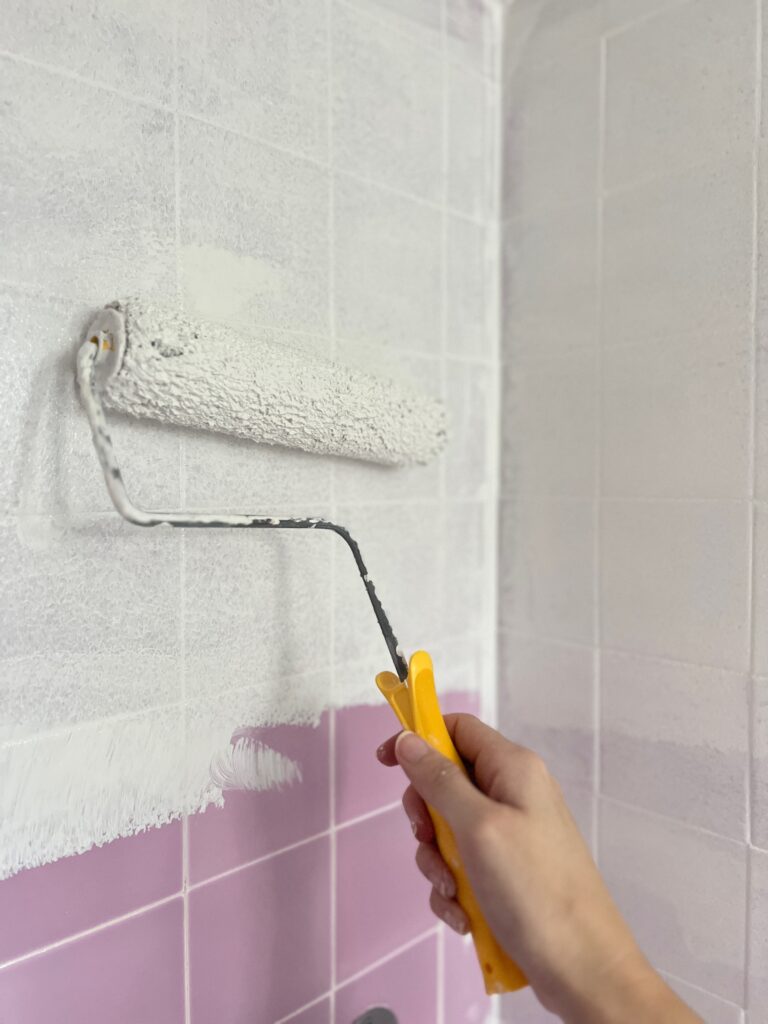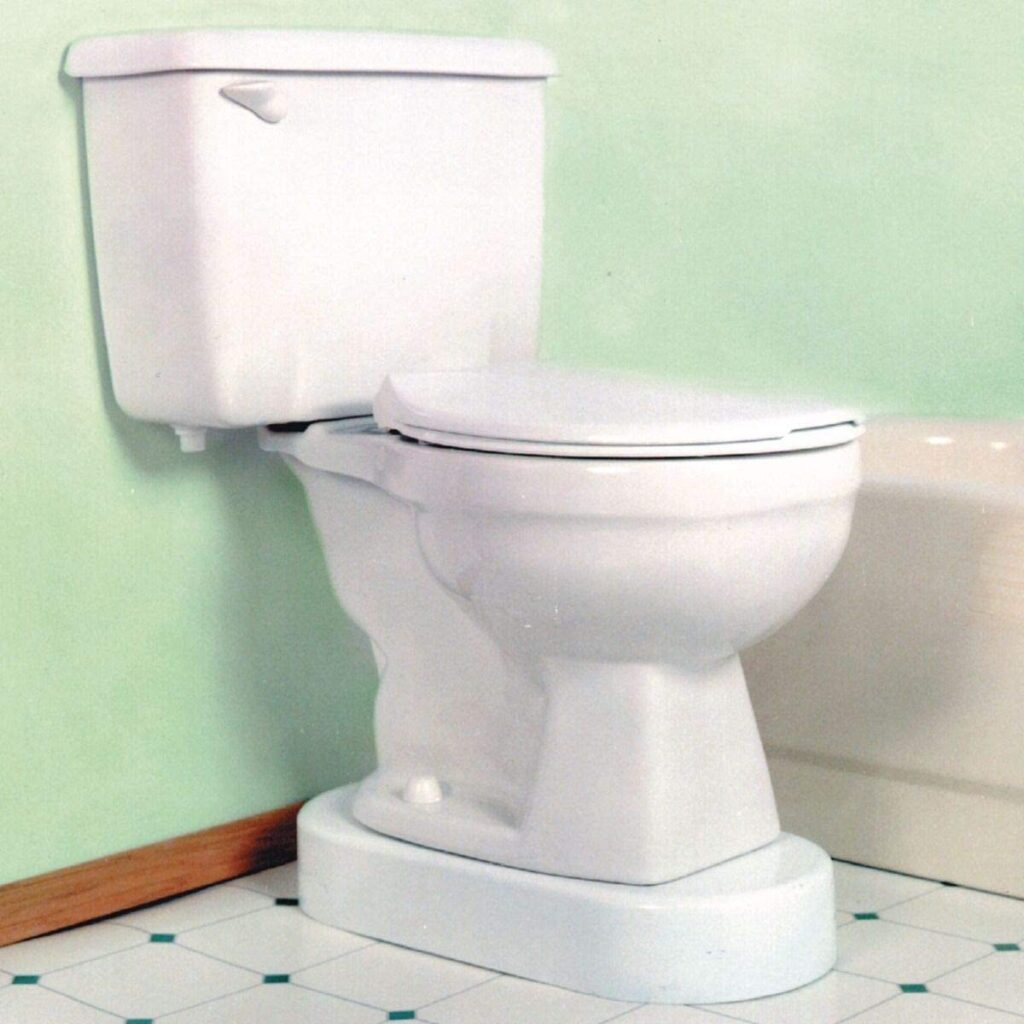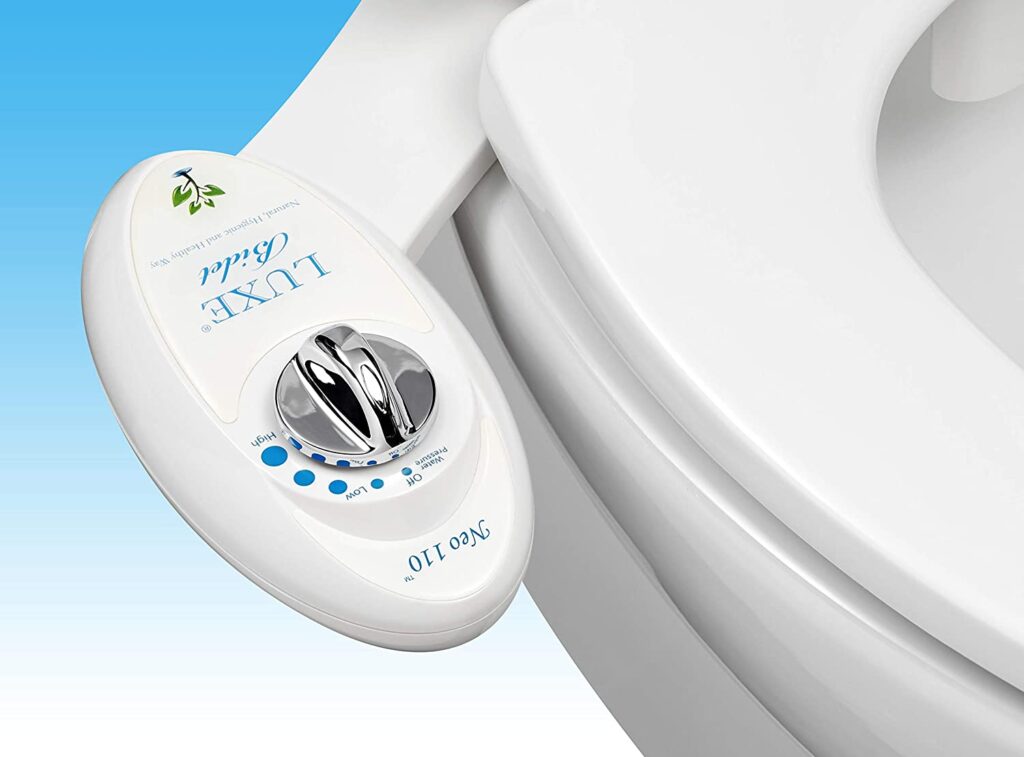Can you paint over bathroom tile without sanding? If you’ve been staring at your outdated bathroom tiles and dreading the thought of a costly remodel, you’re not alone.
The good news? You might not need to rip them out or spend hours sanding before you refresh your space. With the right approach, you could transform your bathroom tiles with a coat of paint—no sanding required. Sounds like a dream, right?
But before you grab a brush, there are a few things you need to know to ensure your tiles look flawless and the paint lasts. Keep reading, because this might just be the budget-friendly solution you’ve been searching for!
Table of Contents
Pros And Cons Of Painting Bathroom Tiles
Thinking of giving your bathroom a fresh look without breaking the bank? Painting over bathroom tiles might sound like a quick and budget-friendly solution, but it does come with its own set of advantages and drawbacks. Before you grab a paintbrush, it’s worth weighing the pros and cons to decide if this is the right approach for your space.
Pros Of Painting Bathroom Tiles
Cost-Effective: Replacing tiles can cost a small fortune, especially for larger bathrooms. Painting them, on the other hand, can save you hundreds of dollars. This makes it a go-to option if you’re working on a tight budget.
Quick Refresh: Unlike a full renovation, painting tiles takes only a few days. If you’re looking to update your bathroom before hosting guests or selling your home, this can be a game-changer.
DIY-Friendly: You don’t need advanced skills or expensive tools to paint bathroom tiles. With the right paint and preparation, even beginners can achieve a polished look. It’s a satisfying weekend project you can complete on your own.
Cons Of Painting Bathroom Tiles
Durability: Painted tiles are not as tough as professionally installed tiles. Over time, the paint can chip or peel, especially in high-moisture areas like showers. This means you may need touch-ups sooner than you’d expect.
Limited Finish Options: While paint can give you new color options, it won’t replicate the glossy, smooth finish of ceramic tiles. If you’re after a high-end look, painting may leave you wanting more.
Preparation is Key: Skipping steps like cleaning or priming can lead to a poor result. Even though sanding isn’t required, you’ll still need to thoroughly clean and degrease the tiles. Are you ready to put in that effort?
Final Thoughts
Painting bathroom tiles can be a fantastic solution if you’re after a quick and affordable upgrade. But it’s not the perfect fix for every situation. Think about how long you want the update to last and how much wear and tear your bathroom endures daily.
Would you be okay with occasional maintenance, or are you looking for a long-term solution? Your answer will guide your decision.
Choosing The Right Paint For Bathroom Tiles
Painting over bathroom tiles can be a budget-friendly way to refresh your space without the hassle of removing or sanding the tiles. But did you know that using the wrong paint can lead to peeling, cracking, or a finish that doesn’t stand up to moisture? Choosing the right paint is crucial to ensuring your bathroom makeover lasts and looks stunning. Let’s dive into the specifics.
Which Type Of Paint Works Best On Bathroom Tiles?
Bathroom tiles are exposed to constant moisture, heat, and cleaning products. Not all paints are strong enough to handle this environment. Look for epoxy-based paints or tile-specific paints, as they are designed to bond tightly to slippery surfaces and resist wear and tear.
If you’re painting tiles near water sources like the shower, opt for waterproof or water-resistant paint. These paints will stay intact despite splashes and humidity.
For areas less exposed to water, you can also consider acrylic latex paint. It’s easier to work with and can still provide a durable finish when sealed properly.
Glossy, Matte, Or Satin Finish?
The finish you choose can make or break the look of your painted tiles. Do you prefer a shiny, modern vibe? Glossy finishes reflect light and are easy to clean, but they can highlight imperfections on the tile surface.
If you’re going for a more muted look, matte finishes can provide a sophisticated touch. However, they may be harder to clean and less durable in high-moisture areas.
Satin finishes strike a balance between the two. They offer a subtle shine while being practical for areas that require frequent cleaning.
Should You Use Primer Before Painting Tiles?
Skipping primer might seem tempting, but it can jeopardize the longevity of your painted tiles. Primer creates a smooth base that helps paint adhere better to the tile surface.
Choose a bonding primer specifically designed for glossy surfaces. It will ensure the paint stays put, even in steamy conditions.
Don’t forget to let the primer dry completely before applying your paint. Rushing this step could lead to uneven coverage or peeling later.
How Many Coats Of Paint Are Enough?
One coat is rarely enough for bathroom tiles. You’ll likely need two to three coats for even coverage and durability.
Apply thin layers rather than thick ones. Thick coats can lead to drips and uneven drying.
Between each coat, let the paint dry completely. This step ensures the layers bond properly, giving you a smooth and long-lasting finish.
So, have you decided which paint is best for your bathroom tiles? The right choice can turn a dull, outdated bathroom into a fresh and inviting space. Share your thoughts or questions in the comments below!
Preparing Tiles For Painting Without Sanding
Painting over bathroom tile without sanding might sound like a dream, but it’s entirely doable with the right prep work. The secret lies in creating a surface that paint can stick to while maintaining durability. Let’s dive into how you can get your tiles ready for a fresh coat of paint, no sanding required.
1. Clean The Tiles Thoroughly
Start by cleaning your tiles like you’ve never cleaned them before. Dirt, grease, and soap scum can prevent paint from adhering properly. Use a heavy-duty cleaner, like trisodium phosphate (TSP), to cut through grime and leave the surface squeaky clean.
Don’t forget to scrub the grout lines. Grime there can ruin the final look. Rinse with water and dry thoroughly to avoid trapping moisture under the paint.
2. Repair Any Damage
Inspect your tiles for cracks, chips, or missing grout. Paint won’t hide these imperfections, and they’ll stand out even more once the job is done. Use tile filler or epoxy to patch up any damage.
Let repairs cure as per the product instructions. A smooth surface ensures a professional finish.
3. Use A Deglosser
A liquid deglosser is your best friend when skipping sanding. It removes the shiny finish from tiles, making the surface rough enough for paint to stick. Apply it with a rag or sponge, following the manufacturer’s instructions.
Work in small sections to ensure even application. Remember to wear gloves and work in a well-ventilated area to avoid exposure to fumes.
4. Mask Off Areas You Don’t Want To Paint
No one wants paint splatters in unwanted places. Use painter’s tape to cover edges, fixtures, and any areas you want to keep paint-free. This simple step saves you from touch-ups later.
Take your time to ensure the tape is applied smoothly. Wrinkles in the tape can lead to uneven lines.
5. Apply A Quality Primer
Primer is non-negotiable when painting tiles. It creates a bond between the paint and the tile, ensuring the finish lasts. Look for a primer designed specifically for glossy or ceramic surfaces.
Apply the primer evenly with a roller or brush. Let it dry completely before moving on to painting.
By following these steps, you’re setting yourself up for a successful tile transformation. What color are you thinking of for your bathroom makeover? Let us know in the comments!

Credit: ouraestheticabode.com
Step-by-step Guide To Painting Tiles
Painting bathroom tiles can feel like a daunting task, but it’s more achievable than you might think. You don’t need to sand your tiles to give them a fresh, updated look. With the right steps and materials, you can transform your bathroom into a space that feels clean and modern without the hassle of sanding. Let’s break it down with this step-by-step guide.
Cleaning The Tile Surface
Start by thoroughly cleaning your tiles. Dirt, soap scum, and grease can prevent paint from adhering properly. Use a mixture of warm water and a grease-cutting cleaner to scrub the tiles and grout lines.
Rinse well and let the surface dry completely. Don’t skip this step; even a small amount of residue can ruin your final result. If you notice any mold or mildew, use a bathroom-safe mold remover to tackle it.
Applying A Quality Primer
A primer is your secret weapon for making paint stick to tiles. Choose a bonding primer specifically designed for glossy surfaces like tile. This step ensures the paint adheres securely and lasts longer.
Apply the primer evenly with a brush or roller. Pay extra attention to grout lines, as they can be tricky to cover. Let the primer dry completely based on the instructions—it’s worth the wait.
Using The Correct Painting Technique
Opt for a high-quality paint suitable for bathroom walls and tiles. Epoxy or enamel paints work best because they’re durable and water-resistant. Use a small brush for grout lines and a foam roller for smooth tile surfaces.
Apply thin, even coats. Thick layers may create streaks or peel over time. Allow each coat to dry fully before adding the next one—patience pays off here.
Sealing The Painted Surface
Once your paint is dry, seal it to protect against moisture and wear. Use a clear, water-resistant sealer designed for tiles. This step is crucial, especially in high-humidity areas like bathrooms.
Apply the sealer with a clean brush or roller, making sure to cover every inch. Let it cure as per the product instructions. A good sealer keeps your hard work looking fresh for years.
By following these steps, you can skip the sanding and still achieve a polished, professional look. What’s holding you back from giving your bathroom tiles a makeover?
Common Mistakes To Avoid
Painting bathroom tiles can refresh the space without costly renovations. Yet, many make mistakes that lead to unsatisfactory results. Avoiding these errors ensures your painted tiles look polished and last longer.
Understanding common pitfalls can save you time, effort, and money. Below are mistakes to avoid when painting bathroom tiles without sanding.
Skipping Proper Cleaning
Tiles accumulate grime, soap scum, and mold over time. Painting directly over dirty tiles prevents the paint from sticking well. Always clean the tiles thoroughly with a degreaser or tile cleaner before painting. Use a scrub brush to remove stubborn residue.
Using The Wrong Paint
Not all paints work on bathroom tiles. Regular wall paint doesn’t hold up in damp environments. Choose epoxy or tile-specific paint to ensure durability. These paints resist moisture and prevent peeling over time.
Ignoring Surface Preparation
Surface preparation is crucial for paint adhesion. Some skip this step thinking sanding is unnecessary. While you avoid sanding, applying a bonding primer is essential. Bonding primer helps the paint adhere to smooth surfaces like tiles.
Applying Thin Coats
Using thin coats can lead to uneven coverage and streaks. Thick, even coats ensure a smooth finish and better durability. Allow each coat to dry fully before applying the next for professional results.
Overlooking Grout Lines
Grout lines can trap dirt and moisture. Painting over unclean grout affects the final look. Clean grout lines before painting to avoid imperfections. You can also use a small brush for precise application around grout lines.
Rushing The Drying Process
Paint needs adequate drying time to cure properly. Many rush the process and use the bathroom too soon. This can ruin the finish and cause peeling. Wait at least 24 hours before exposing the painted tiles to moisture.

Credit: ouraestheticabode.com
Maintaining Painted Bathroom Tiles
Painting over bathroom tiles can breathe new life into your space. But keeping the painted tiles in good condition requires some effort. With proper maintenance, your painted tiles can last for years without peeling or fading.
Bathrooms often face high humidity and frequent cleaning. These factors can wear down painted surfaces. Follow these tips to maintain the look and durability of your painted tiles.
1. Use Gentle Cleaning Products
Avoid harsh cleaning agents that can damage the painted surface. Opt for mild, non-abrasive cleaners designed for delicate surfaces. A mix of warm water and gentle dish soap works well. Wipe the tiles with a soft cloth or sponge to avoid scratches.
2. Clean Regularly To Prevent Dirt Build-up
Dust and grime can dull the painted finish over time. Clean the tiles weekly to remove dirt and soap scum. Regular cleaning prevents stubborn stains from forming on the painted surface.
3. Keep The Bathroom Well-ventilated
Humidity can weaken paint and cause peeling. Use an exhaust fan or open a window during and after showers. Proper ventilation keeps moisture levels low and protects the paint.
4. Avoid Scrubbing With Hard Brushes
Scrubbing with stiff brushes can chip the paint. Stick to soft sponges or microfiber cloths for cleaning. Gentle cleaning ensures the painted surface remains intact for longer.
5. Touch Up Chips And Scratches
Over time, small chips or scratches may appear. Address them promptly to prevent further damage. Keep extra paint on hand for quick touch-ups. A small brush works best for precise applications.
6. Reseal The Paint Periodically
Sealant adds a protective layer over the paint. Resealing every 6–12 months helps maintain durability. Use a clear, waterproof sealant designed for painted tiles.
7. Avoid Dragging Heavy Items Across Tiles
Dragging items like furniture or tools can scratch the painted surface. Lift items instead of sliding them. Protect the tiles by using felt pads on furniture legs.
When To Consider Professional Help
Painting bathroom tiles can be a cost-effective way to refresh your space. It’s tempting to skip preparation steps like sanding, but this can lead to challenges. Some situations require expertise for a smooth and durable finish. Knowing when to call a professional can save time and frustration.
Complex Tile Patterns
Tiles with intricate designs or uneven surfaces are harder to paint evenly. Professionals use specialized tools and techniques to handle these challenges. They ensure paint adheres properly without damaging delicate patterns.
Large Bathroom Areas
Painting a small section of tiles may be manageable on your own. Larger bathrooms with extensive tiling require more effort and precision. Professionals work efficiently, covering bigger areas with consistent results.
Water Damage Or Mold Issues
Tiles exposed to water damage or mold need extra care before painting. Professionals assess and treat these problems to prevent future peeling or bubbling. They use products that resist moisture, ensuring a lasting finish.
High-quality Results
DIY painting can leave uneven finishes or visible brush strokes. Professionals achieve smooth, flawless surfaces using advanced equipment. Their experience ensures the paint stays durable in moist bathroom conditions.
Lack Of Time Or Skills
Tile painting involves preparation, precision, and patience for a good outcome. Busy schedules or limited DIY skills can make the process overwhelming. Professionals manage the project, delivering excellent results quickly.
Frequently Asked Questions
Can You Paint Bathroom Tile Without Sanding?
Yes, bathroom tiles can be painted without sanding by using high-quality tile paint and proper cleaning for adhesion.
What Kind Of Paint Will Stick To Bathroom Tile?
Use epoxy or acrylic latex paint for bathroom tiles. Clean tiles thoroughly and apply a tile-appropriate primer for durability.
Is Painting Over Bathroom Tiles A Good Idea?
Painting over bathroom tiles can be a cost-effective update. Use tile-specific paint for durability and moisture resistance. Ensure proper cleaning, sanding, and priming before painting for long-lasting results. This method works best for low-moisture areas and may not be ideal for high-traffic or wet zones like showers.
Can You Paint Over Existing Bathroom Tiles?
Yes, you can paint over bathroom tiles using tile-specific paint. Clean, sand, and prime the tiles before painting.
Conclusion
Painting over bathroom tile without sanding is possible with proper preparation. Clean the surface thoroughly to remove dirt and grime. Use a primer designed for tiles to ensure paint adhesion. Choose high-quality tile paint for durable, long-lasting results. This method saves time and effort compared to sanding.
It’s an affordable way to refresh your bathroom’s look. Always follow product instructions for the best outcome. With the right tools and steps, you can achieve a smooth, updated finish. Give it a try and enjoy your transformed space!






